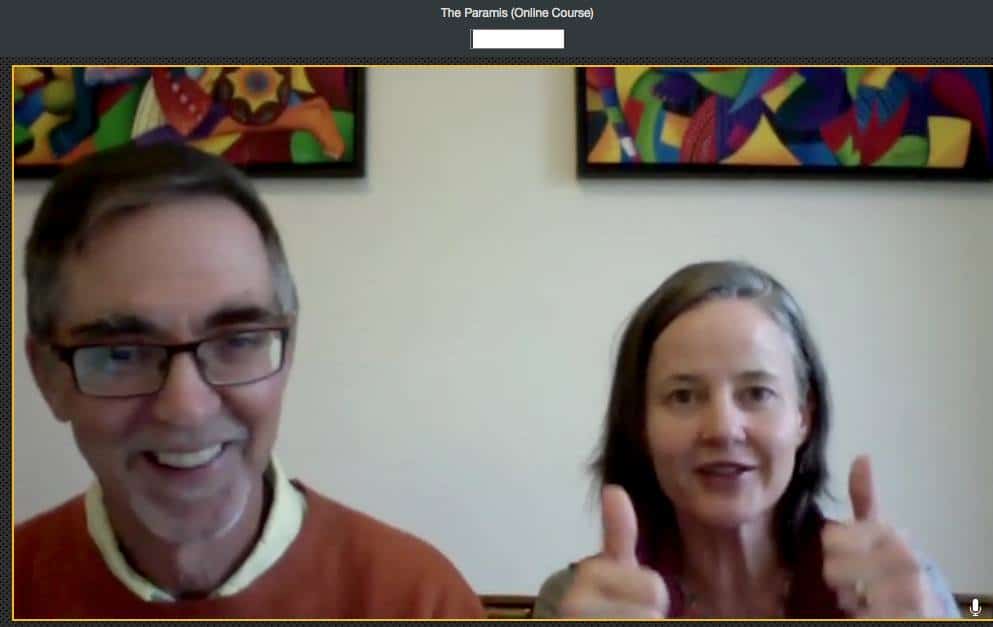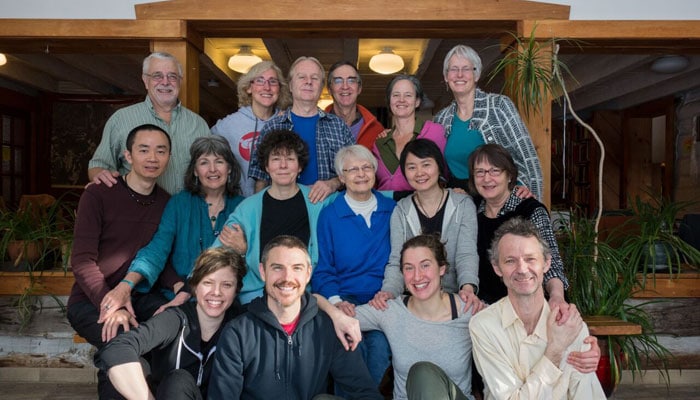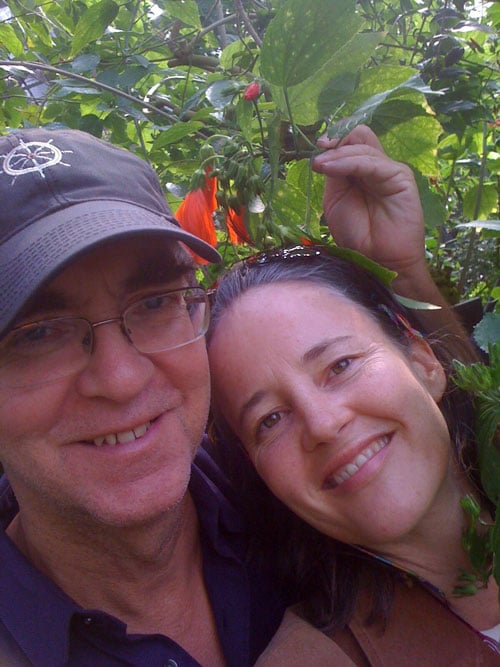Do you want more freedom? And what do you mean by “freedom?”
There’s political freedom, freedom of expression and freedom of opportunity, all of which are action oriented, external manifestations. We can also enjoy freedom from troubled mind states and freedom from the roller coaster of emotional turbulence: these are inner freedoms. Which most represents “freedom” to you?
The spiritual life focuses on the inner freedoms and our everyday lives focus on the freedom of the action-oriented pursuits. Historically, these two worlds have been separate. The outer freedoms were, and are, being sought in the socio-political arena. The inner freedoms have been the purview of the religious world.
 Traditionally, there were two methods used to develop the inner freedoms. One is the monastic model and the other, for lack of a better word, the yogic model.
Traditionally, there were two methods used to develop the inner freedoms. One is the monastic model and the other, for lack of a better word, the yogic model.
In the yogic model an adept lived and studied in close contact with their teacher in a day-to-day ongoing relationship that could last years. One classic example is the Tibetan yogi-saint, Milarepa, who lived and trained for years with his teacher, Marpa.
In the monastic model a similar approach was used. But instead of focusing exclusively on a personal relationship with a teacher, the organization or the monastery itself also acted as the teacher, or as the container for the teachings to take place.
In both cases a combination of work and contemplation filled one’s days. Additionally, in both this day-to-day engagement – in terms of work as well as study – was called “training.” We call the work part “Karma Yoga.”
Does Karma Yoga Involve Backbends?
Well, not the usual, physical kind – Karma Yoga makes us limber in other ways. “Karma” means “action” or “activity” and also implies the law of cause and effect. If you wished to be clever you could say it was the “car” or vehicle of “ma,” the mother. That’s to say, it’s evolution in progress, because we learn and evolve through our activity.
“Yoga” means “to join” or “unite,” as we see in the word “yoke,” which joins two oxen together to double their power and energy and effectiveness. We could consider one ox as the body, the other ox as mind.
Together karma and yoga link body and mind in balanced and wholesome activity. This activity in turn evolves our understanding towards a more awakened and compassionate engagement with ourselves, with others and with the world.
Typically we act out of self-interest: our entire day revolves around what I think, what I feel, whether I agree or disagree, whether I like it or don’t. All of these self-oriented “preferences” are rooted in habits and conditioning – that is, our karma.
In Karma Yoga we dedicate our actions to service, as acts of generosity. The reward is ours in that it produces a good, rather, a radiant state of being: giving to others feels much better than being self-centered! At the same time, the outer reward goes to the organization or community.
This doesn’t mean the individual walks away with nothing. Tithing is a historic way of measuring how much one contributes (the Old Testament mentions a practice of giving10% of one’s “blessings” to God). But more importantly, the idea of working just for me, to satisfy me, and to get more for me was transformed instead to a larger “we.”
Nowadays we talk about moving from a mecosytem to a wecosystem. Or, as Bob Dylan sang, “You’re gonna have to serve somebody.”
If we work for the benefit of awakening yourself and others as a first priority, we escape the pitfall of isolating ourselves from others. More importantly the emotional turmoil of feeling alone and unsupported falls away. That’s something to get excited about.
We’re in this together. And as we serve others, they serve us. Just as it’s impossible to see one’s own face without a mirror, so too it takes others to show us our inevitable blind spots. It’s much easier to help others see their blind spots – and hear others to point out our own – when we see it as an act of Karma Yoga.
Can I Meditate Instead?
Some think we can uncover our blind spots through “sitting practice,” also called meditation. While it is true one can discover much this way, what we cannot see is how our patterns play out in our daily lives: the two worlds of sitting meditation and day-to-day life are quite far apart from each other. Integral Spirituality recognizes this by distinguishing states (attained through meditation) from stages (developed via Karma Yoga).
Easterners have traditionally been meditators, but westerners or modern people tend to be far more inclined to be “doers.” It’s challenging for most of us to find the requisite time and resources to do enough meditation to ensure the breakthroughs we’d like. In his book Outliers, Malcolm Gladwell maintains that it takes roughly ten thousand hours of practice to achieve mastery in a particular field. Not many modern people feel they can take that amount of time to meditate.
In one sense, that’s why monasteries and convents were developed: to create the conditions required to make space for those 10,000 hours. But even there, a greater part of the time was spent doing Karma Yoga: cooking, cleaning, growing food, copying texts, etc. Zen training is famous for making good use of non-meditation time: Zen practitioners have proved it’s possible to awaken while making tea, gardening and raking sand into abstract designs!
These days not many want to live and work in a monastic environment on an ongoing basis. The rules may feel too stringent, the lifestyle too limiting. Even fewer are drawn to the yogic path: time and money may be a challenge, or there may be authority issues with a master-apprentice relationship, or both.

Having your cake and eating it too, however, also implies an ongoing training and discipline. Remember that here “discipline” means to study or train, not to be punished. This helps prevent us from falling into mere indulgence and self-delusion about our spiritual unfoldment.
This is where the training becomes essential.
What’s Dharma Training?
“Dharma” means “law” or “principle.” It’s basically about how things work in this universe of ours. For instance, you could speak about the dharma of gravity, or of human feelings.
In our context, it means the study of the principles of awakening, and then their application to our lives.
Interestingly, in Buddhist teachings, the Buddha is called a “trainer.” If we consider that most of us don’t have 10,000 hours to develop our spiritual aspirations, then how are we spending those hours instead? And how can we leverage those hours towards our spiritual aspiration, to make it all work well for us?
Most of us spend the majority of our time either at work, at home, or in recreational activities. This is fertile ground for Dharma Training.
By implementing methods aimed at bringing greater awareness or mindfulness into these areas of our lives, we create calm and concentration. This in turn helps us cultivate interest and energy, which then yield more joy and peacefulness in our lives. Talk about a virtuous cycle.
Interestingly, these elements have been around for a long time: in Buddhist teachings they are called the factors of awakening.
Moreover, by developing generosity and patience in a way that establishes an unperturbed, ongoing clarity, we get more bliss and have clearer insights into what makes us feel better. We also get insights into what makes us feel worse, so we can change our ways. Knowing how to do this has been called “wisdom.”
Together, Karma Yoga and Dharma Training help integrate our meditative experiences in a way that brings together our spiritual aspirations and our active modern lifestyles. It also supports our desire to be engaged in supporting and promoting a healthier planet, more satisfying careers, and improved relationships. Remarkably, it also teaches us to enjoy time alone without fears of abandonment or isolation.
This is what we mean by “freedom:” freedom from troubled mind states and freedom from the roller coasters of mental and emotional turbulence.
Sound good to you? This is our path. Sign up to learn more.
This blog post was written by Dharma Teachers Doug Duncan and Catherine Pawasarat.








